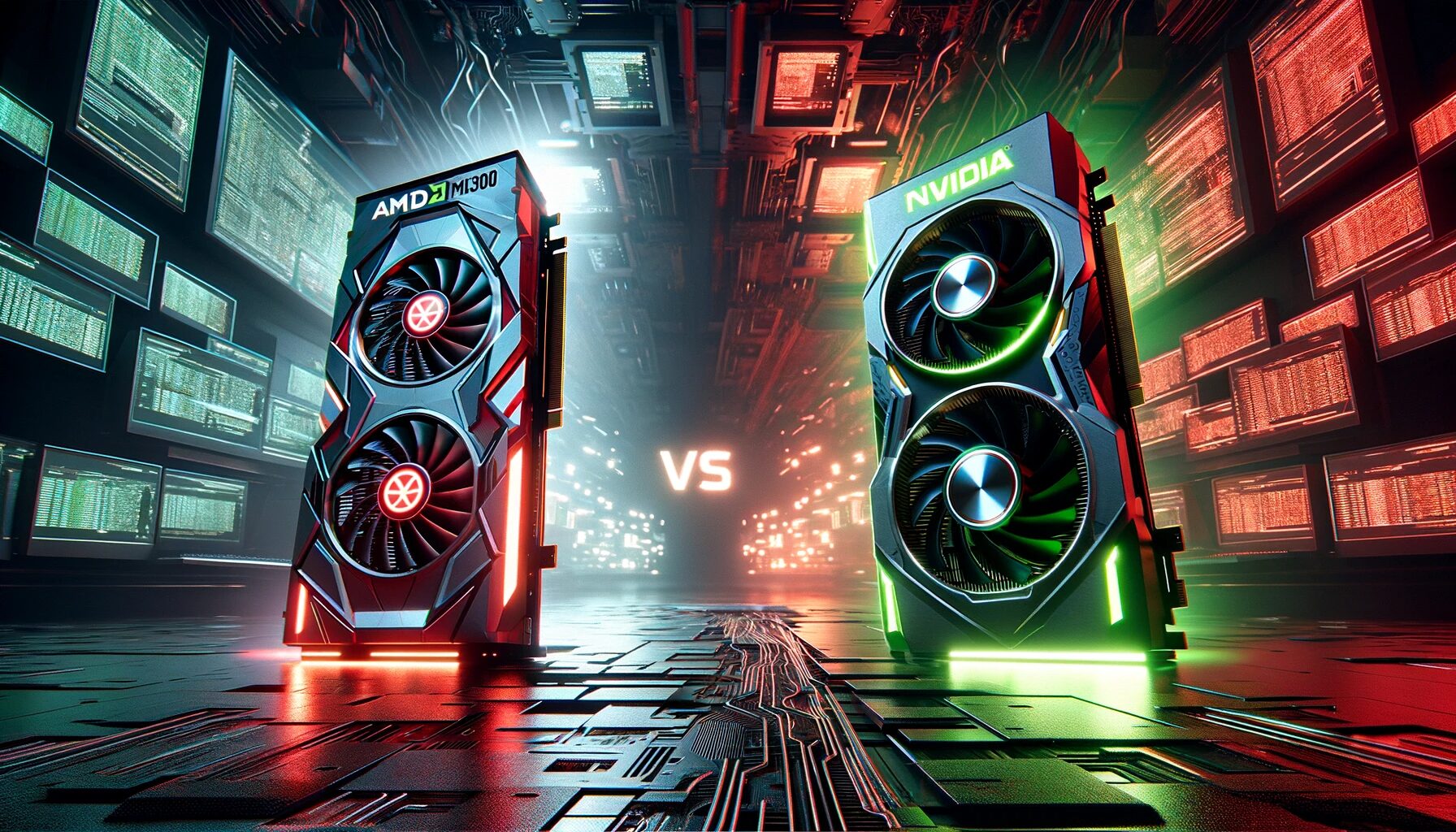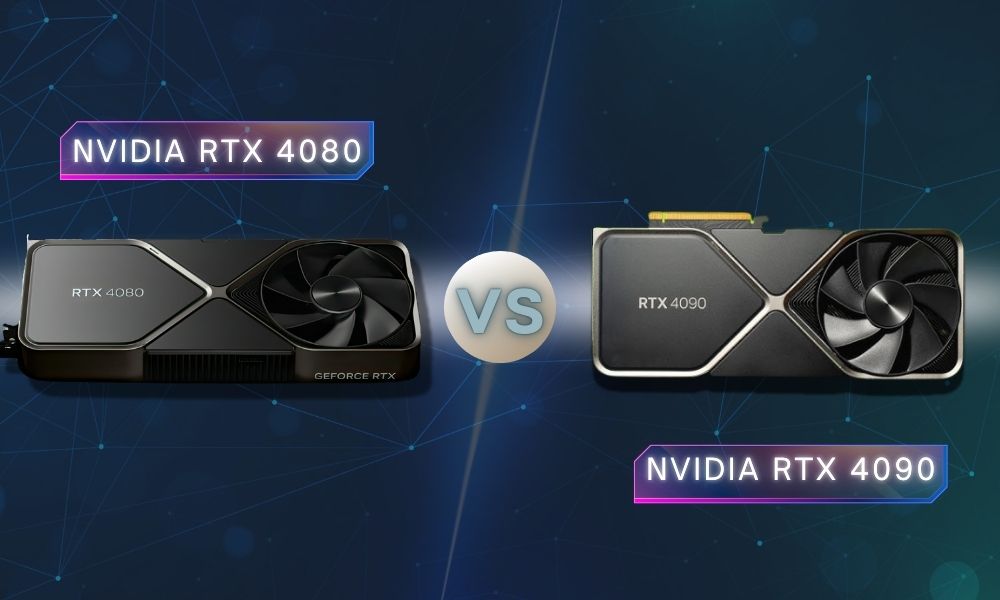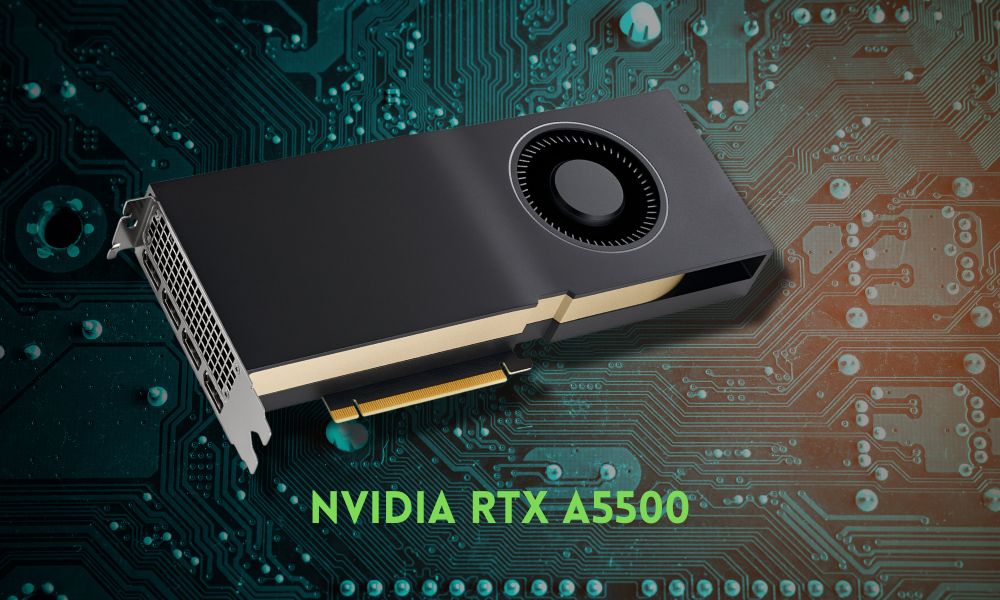In the ever-evolving world of technology, two giants stand at the forefront of innovation: AMD and NVIDIA. These GPUs represent the cutting edge of graphics processing technology, and their performance can influence the gaming world and industries like artificial intelligence, scientific computing, and more.
This blog will delve into the intriguing battle between the AMD MI300 and the NVIDIA H100 GPUs. Making waves in the tech industry, each GPU boasts unique features and capabilities that demand a close examination.
Architecture Breakdown
AMD MI300 Architecture
When delving into the architecture of the AMD MI300, we encounter a fascinating array of key components and design elements. This GPU incorporates advanced features such as multi-core processors, high-speed memory interfaces, and an efficient cooling system. Additionally, the MI300 is designed to excel in gaming and professional applications, making it a versatile choice for enthusiasts and professionals alike.
Performance metrics and benchmarks paint a compelling picture of the MI300’s capabilities. With impressive clock speeds, ray tracing support, and AI acceleration, this GPU has the potential to redefine gaming and content creation experiences. Benchmark tests reveal its prowess in delivering high frame rates and exceptional image quality, setting a high standard in graphics processing.
NVIDIA H100 Architecture
The architecture of the NVIDIA H100 is equally intriguing, showcasing unique features and design elements that set it apart in the market. One standout feature is its incorporation of specialized hardware for AI and deep learning tasks. This design choice makes the H100 a formidable contender in machine learning and scientific simulations.
Comparative performance analysis between the H100 and other GPUs demonstrates its exceptional computational power. With its high core count and memory bandwidth, the H100 excels in data-intensive applications, making it an appealing option for professionals and researchers who demand peak performance from their GPUs.
Technical Specifications
AMD MI300
Processor Details
The AMD MI300 boasts a powerful processor with multiple cores, allowing for parallel processing and improved application performance. Its clock speeds and cache sizes ensure swift execution of tasks, whether in gaming or content creation.
Graphic Capabilities
The MI300’s graphic capabilities shine with ray tracing and real-time rendering support. Gamers can expect stunning visuals and immersive experiences, while professionals benefit from accelerated workflows and high-quality rendering.
Memory Specifications
With ample memory capacity and high-speed interfaces, the MI300 can easily handle large datasets and complex scenes. Its memory configuration ensures minimal latency and smooth multitasking, making it a versatile choice for demanding workloads.
NVIDIA H100
Processor Specifications
NVIDIA’s H100 features a formidable processor focusing on AI and deep learning tasks. Its architecture is tailored to excel in data-intensive computations, making it an ideal choice for researchers and professionals in artificial intelligence and scientific simulations.
Graphics Capabilities
The H100’s graphics capabilities are not to be underestimated, as it offers excellent support for real-time rendering and high-resolution displays. Whether you’re a gamer or a content creator, the H100 delivers exceptional visual experiences.
Memory Details
With a well-balanced memory configuration, the H100 ensures efficient data handling and storage. Its high memory bandwidth and capacity are assets in handling complex workloads and large datasets, further cementing its position as a top-tier GPU.
Performance Testing
When comparing the AMD MI300 and NVIDIA H100, it’s crucial to establish a fair and comprehensive benchmarking methodology. This ensures the evaluation is based on objective criteria and provides meaningful insights to potential users. Benchmarking involves running a series of standardized tests and measuring performance metrics. These tests often include synthetic benchmarks and real-world applications to assess the GPUs’ capabilities.
Real-World Performance Scenarios
Gaming
Gaming performance is a key consideration for many GPU enthusiasts. The AMD MI300 and NVIDIA H100 are designed to deliver an exceptional gaming experience. Benchmarking these GPUs in popular game titles at various settings (e.g., resolution and graphics quality) provides insights into their gaming prowess. Factors such as frame rates, ray tracing performance, and compatibility with gaming technologies like DLSS (Deep Learning Super Sampling) come into play.
Content Creation
Content creators often rely on powerful GPUs for video editing, 3D modeling, and graphic design tasks. Real-world performance scenarios in content creation include rendering times, video export speeds, and the ability to handle complex scenes and high-resolution media. Benchmarking in applications like Adobe Premiere Pro, Blender, and Autodesk Maya sheds light on how these GPUs perform in professional workflows.
Machine Learning Applications
For researchers and professionals in machine learning, the performance of GPUs during training and inference is crucial. Benchmarking machine learning workloads helps assess how efficiently the GPUs handle tasks like training deep neural networks. Metrics like training time, accuracy, and support for AI frameworks like TensorFlow and PyTorch are essential in evaluating their suitability for machine learning applications.
Power Efficiency
Power efficiency is vital, especially for those concerned about energy consumption and thermal management. Comparing the power consumption of the AMD MI300 and NVIDIA H100 under various workloads provides insights into their efficiency. Lower power consumption reduces electricity bills and results in less heat generation, which can impact system longevity.
Effective thermal management is essential to maintaining GPU performance and prolonging its lifespan. Both the MI300 and H100 employ various cooling strategies, such as fans, heat sinks, and advanced thermal designs. Users should consider how these GPUs manage heat, especially in demanding scenarios, to ensure consistent performance without overheating issues.
Price and Value Proposition
Cost Analysis of AMD MI300
Understanding the pricing of the AMD MI300 is crucial when considering this GPU. Factors to evaluate include the initial purchase price, any bundled software or services, and the total cost of ownership over the expected lifespan of the GPU. Comparing the MI300’s cost with its competitors can help consumers make an informed decision based on their budget and performance requirements.
Cost Analysis of NVIDIA H100
Similarly, potential buyers of the NVIDIA H100 should conduct a cost analysis. This includes examining the base price, additional features, and any subscription models or support packages that might affect the overall cost. It’s important to consider not only the upfront investment but also any potential long-term savings or benefits associated with the H100.
Value for Money Considerations
When comparing the AMD MI300 and NVIDIA H100, assessing their value for money is essential. This involves weighing the GPU’s performance, features, and long-term reliability against its price. Users should also consider factors like driver support, software ecosystem, and resale value when determining which GPU offers the best overall value.
Market Impact
Industry Implications of AMD MI300
The release of the AMD MI300 has significant implications for the tech industry. AMD’s commitment to innovation and competitive pricing can potentially disrupt the market and challenge NVIDIA’s dominance. The MI300’s performance and features may shift consumer preferences and influence other GPU manufacturers to step up their game.
Industry Implications of NVIDIA H100
NVIDIA’s H100, on the other hand, brings its own set of industry implications. With its focus on AI and deep learning, the H100 could find applications in industries beyond gaming, such as healthcare, finance, and autonomous vehicles. NVIDIA’s strong reputation in the AI sector positions the H100 as a key player in the growth of AI-driven technologies.
Comparative Market Share Analysis
A thorough market share analysis is essential to understanding how the AMD MI300 and NVIDIA H100 are positioned in the market. Looking at factors like market dominance, adoption rates, and customer satisfaction is critical. Tracking shifts in market share over time can provide insights into which GPU manufacturer is gaining or losing ground.
Summary
The AMD MI300 and NVIDIA H100 comparison represent more than a choice between two GPUs. It reflects the dynamic and ever-evolving nature of the tech industry, where innovation, performance, and value are constantly redefined.
As these GPUs continue to make their mark, consumers and industries alike will benefit from the fierce competition, pushing the boundaries of what GPUs can achieve in gaming, content creation, AI, and beyond. The choice between the MI300 and H100 ultimately depends on individual needs and preferences, but one thing is clear: the future of GPU technology is brighter than ever.





